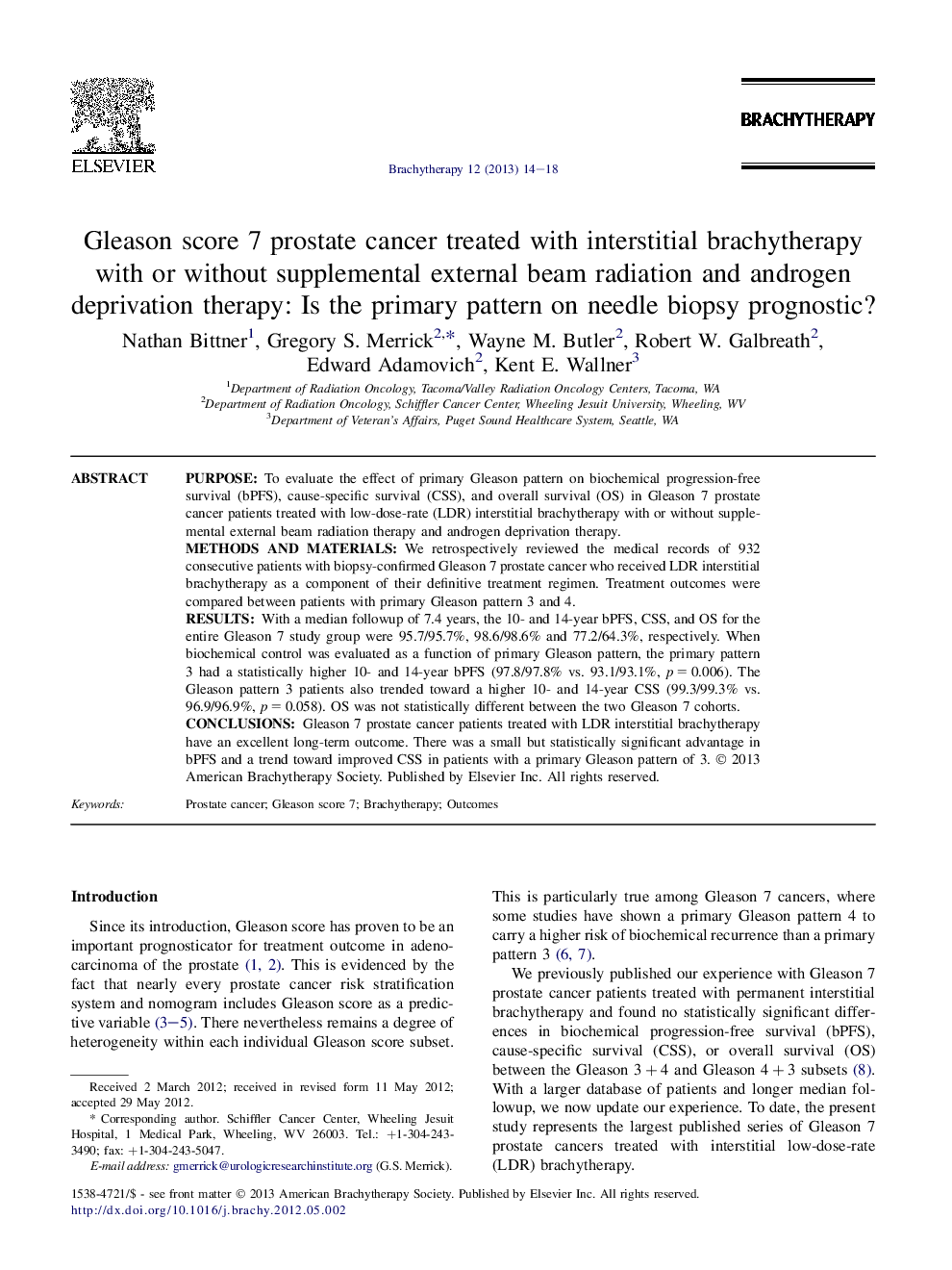| Article ID | Journal | Published Year | Pages | File Type |
|---|---|---|---|---|
| 6189838 | Brachytherapy | 2013 | 5 Pages |
PurposeTo evaluate the effect of primary Gleason pattern on biochemical progression-free survival (bPFS), cause-specific survival (CSS), and overall survival (OS) in Gleason 7 prostate cancer patients treated with low-dose-rate (LDR) interstitial brachytherapy with or without supplemental external beam radiation therapy and androgen deprivation therapy.Methods and MaterialsWe retrospectively reviewed the medical records of 932 consecutive patients with biopsy-confirmed Gleason 7 prostate cancer who received LDR interstitial brachytherapy as a component of their definitive treatment regimen. Treatment outcomes were compared between patients with primary Gleason pattern 3 and 4.ResultsWith a median followup of 7.4 years, the 10- and 14-year bPFS, CSS, and OS for the entire Gleason 7 study group were 95.7/95.7%, 98.6/98.6% and 77.2/64.3%, respectively. When biochemical control was evaluated as a function of primary Gleason pattern, the primary pattern 3 had a statistically higher 10- and 14-year bPFS (97.8/97.8% vs. 93.1/93.1%, p = 0.006). The Gleason pattern 3 patients also trended toward a higher 10- and 14-year CSS (99.3/99.3% vs. 96.9/96.9%, p = 0.058). OS was not statistically different between the two Gleason 7 cohorts.ConclusionsGleason 7 prostate cancer patients treated with LDR interstitial brachytherapy have an excellent long-term outcome. There was a small but statistically significant advantage in bPFS and a trend toward improved CSS in patients with a primary Gleason pattern of 3.
